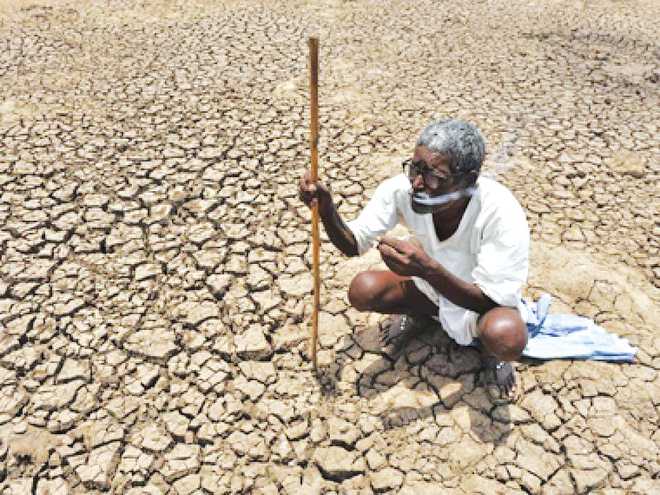Vibha Sharma
Tribune News Service
New Delhi, June 25
As North India awaits its share of Southwest monsoon, do weather occurrences in the pre-monsoon period this year (unprecedentedly violent dust storms and thunderstorms) a forewarning of an impending ecological disaster in the region — the making of a “dust bowl”?
Chandra Bhushan, Deputy Director General of the Centre for Science and Environment, says there are several similarities between prevailing weather conditions over North India and the ones that led to the creation of a “dust bowl” in America in the 1930s. Rising temperatures, change in wind and weather patterns are all adding to the man-made reasons — unsustainable water-guzzling agriculture, lowering of groundwater and deforestation — to the possibility of North India turning into a “dust bowl”.
“It’s time the government recognises it and builds a narrative around land management and soil conservation or else we may be headed for more intense dust storms in future,” he warns.
He says the ecological situation is quite similar to the “dust bowl” situation of 1930s in America. “Dust Bowl was a period of severe dust storms lasting nearly a decade, damaging ecology and agriculture and leading to mass scale migration. North India has not yet reached the level, but signs are forewarning to the unfolding of a similar disaster and it is time that the government steps in,” he adds.
Seven signs
- Like “Great Plains (prairies)”, most parts of Punjab, Haryana, Western UP and Rajasthan are also arid and semi-arid, prone to extended periods of drought
- Large tracts in these parts were converted into irrigated farmlands with deep mechanised ploughing of top soil since 1970s
- Deep-rooted plants original to the area and trapping soil and moisture even during dry periods and high winds were replaced with water-intensive crops like paddy, wheat
- Chemical and water-intensive methods further exploited soil and groundwater
- While forests and natural vegetation decreased, construction activities and concretisation increased
- Due to climate change, high temperatures and high wind speed, soil is turning loose and being blown to cover far-off parts
- Climate change is affecting the pattern of western disturbances, causing stronger winds and storms
Unlock Exclusive Insights with The Tribune Premium
Take your experience further with Premium access.
Thought-provoking Opinions, Expert Analysis, In-depth Insights and other Member Only Benefits
Already a Member? Sign In Now











